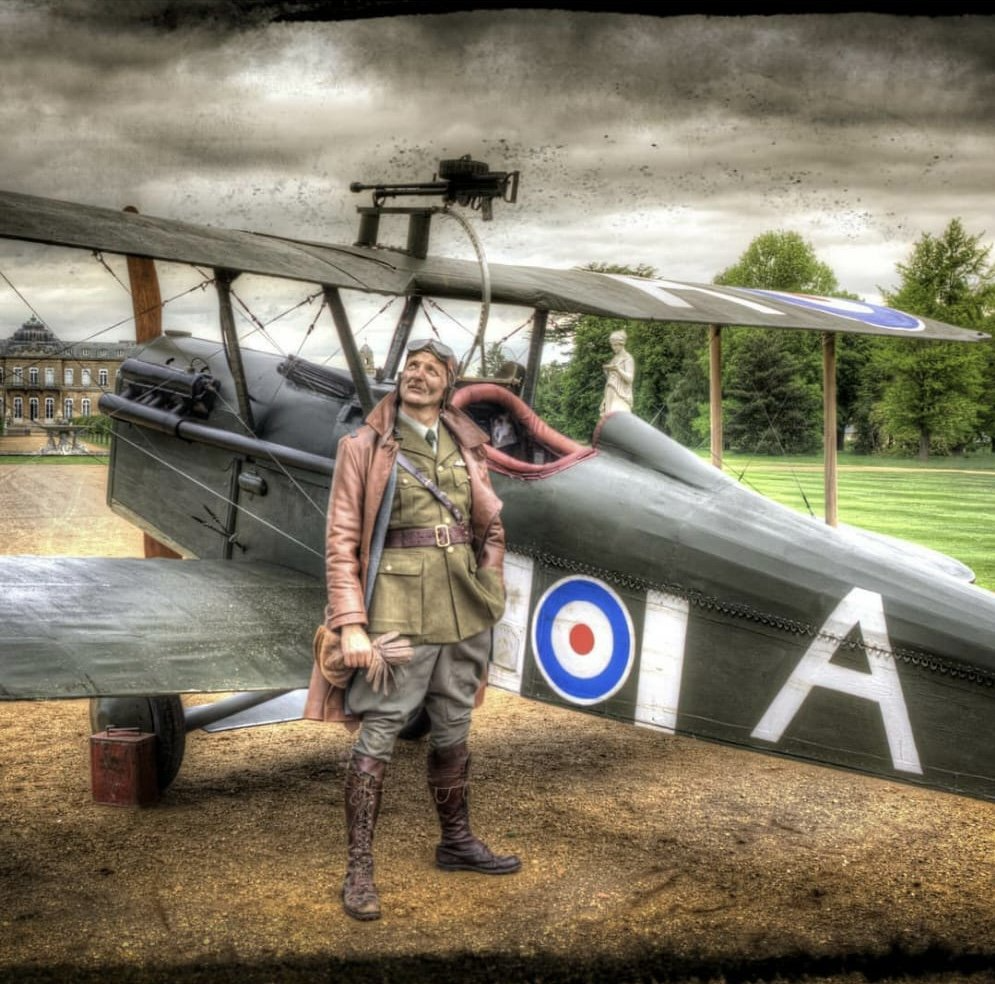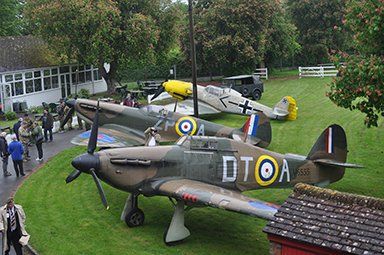Royal Aircraft Factory SE5a
Tearing through the skies during WW1 chasing down "the Hun", the SE5a was the Spitfire of the Great War.
Our exciting new exhibit is finally announced!
War and Peace Displays is excited to bring you a full-sized replica SE5a, the incredible fighter plane of World War I.
Here is a little bit about this iconic aircraft
Designed by H.P. Folland at the Royal Aircraft Factory at Farnborough, the SE5a was developed mid WWI in response to a call from the Royal Flying Corps for the British aircraft industry to develop a fighter, superior to the enemy’s machines, that could help win the war.
The War and Peace Displays aircraft is a highly detailed, full-size, replica of the fast and deadly British SE5a, a scout aircraft that saw the expert pilots of the Royal Flying Corps finally win mastery of the skies in late 1917. With its 180hp water-cooled Wolseley Viper engine and a top speed of over 130 mph, it could out-dive any German machine above the shell-torn fields of Flanders, intercepting ‘the Hun’,(as the Germans were known), with its wing mounted Lewis and Vickers machine guns, synchronised to fire through the propeller arc.
It was a dangerous game of cat and mouse in these early dogfights. Wind seared your face, cold penetrated your bones and with no radio communications between the British squadron, a wave of the hand by the flight leader would be all the signal a pilot received before he was engaged in a twisting turning battle to get on the enemy tail and bring him down. The spruce structure offered no place for armour plating, and, more tragically, no room for a parachute. The leather flying clothing offered some protection against fire, but the risks were still dangerously high.
In aircraft like this, pilots like Edward ‘Mick’ Mannock, Albert Ball and James McCudden made their names, using the speed and agility of the SE5a to pounce on the enemy from high altitude in very much the same way as the famous Spitfire would do just two decades later.
A highly successful fighter with the Royal Flying Corps (later the Royal Air Force), early models were fitted with Hispano-Suiza engines but the Wolseley Viper became the standard powerplant in 1918. When WWI ended, the SE5a was in service with twenty-four squadrons of the Royal Flying Corps and Royal Air Force in France, Palestine, Macedonia, Mesopotamia and the United Kingdom. One squadron of the Australian Flying Corps and two of the United States Air Service on the Western Front were also equipped with the iconic SE5a.
Our SE5a replica accurately reflects this famous aircraft and is painted in the colours of No. 24 Squadron, flying from Conteville, near Abbeville in France just before the Royal Flying Corps became the Royal Air Force in 1918.

Fact File
‘Hun' was a derogatory nickname used primarily by the British and Americans - officers rather than men - during the First World War to describe the German Army, e.g. "the Huns attacked at dawn".
The origin of the term dated back to the Boxer Rebellion (1899-1900); in despatching his troops to China Kaiser Wilhelm II instructed them in a speech to behave like the Huns of old and to wreak vengeance ("let the Germans strike fear into the hearts, so he'll be feared like the Hun").
The term was widely used by Allied propaganda to suggest the worst kind of conduct from the German 'Huns', crushing neutral nations and imposing brutal rule upon conquered peoples.
SE5a key facts
- Power plant: 180 hp water-cooled Wolesely Viper engine
- Wingspan: 26ft 7”
- Length: 20ft 11”
- Height: 9ft 6”
- Max speed 130mph @15,000 ft
- Armament: 1 x Vickers .303 (port side of fuselage) plus 1 x Lewis .303 gun (mounted on upper wing)
Download our Information on the SE5a
